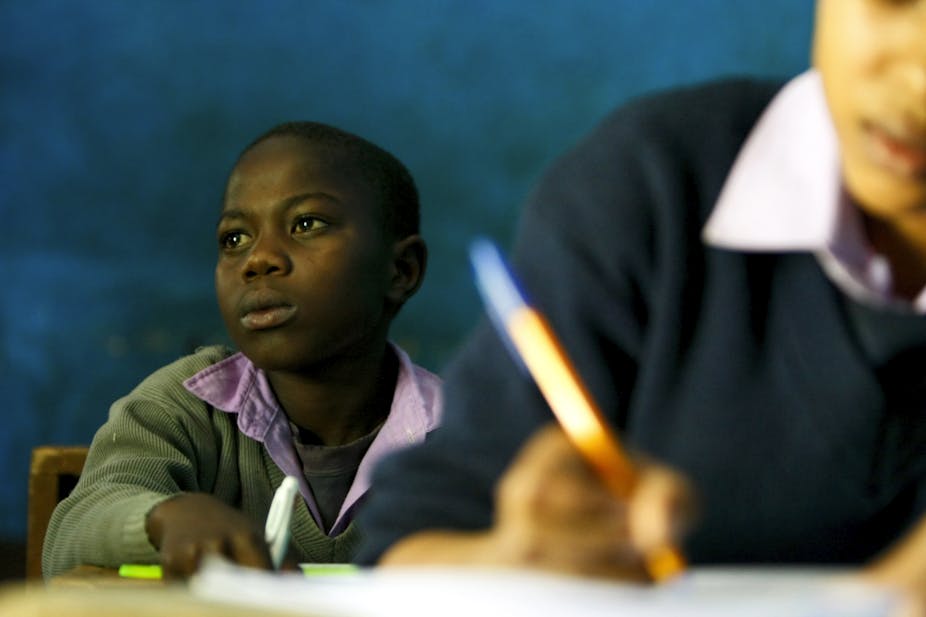Kenya’s education sector is in crisis. Reasoned planning and concerted efforts from the government and the private sector will be required to save it. Despite more than a decade of free primary school education in Kenya, the country saw a shift towards enrollment in profit-making private primary schools, many of them low-cost.
In public schools, classrooms are congested with as many as 80 to 100 pupils, especially in primary schools. In most public primary schools the facilities are often dilapidated and teachers poorly paid compared to other public servants.
For public school teachers, going on strike has become an annual ritual. That is how they talk to the government to improve their terms and conditions of work. As I write this article, the Kenya National Union of Teachers (KNUT) has issued a warning over an impending strike by public sector teachers to agitate for improved terms and conditions of service.
The union leadership is a cunning lot. They always call strikes when they know they will inflict maximum pain when it matters most – during national examinations season that runs from October through November. During the strike period, even if schools do not fully shut down, pupils go without learning and the teachers care less about teaching. No catch-up classes are organised to cover lost ground.

When it comes to Kenya’s private schools, a select few are elite, usually attracting parents ready and able to pay the premium fees for their children’s education. These elite private academies are well run and teachers are highly motivated.
The teachers in private academies do not engage in the kind of strikes to which their public school counterparts resort whenever they agitate for better working conditions. Yet at the same time some private primary schools at the bottom end of the scale are actually not very competitive, and their pupils don’t do very well in national examinations.
Free education not enough
I see absolutely no problem with profit-making entities offering education. The era of white missionaries who brought “free education” is long gone. Any Kenyan who decides to establish a school does so not as a charity but to offer a service and make profit.
There is nothing immoral in operating a profit-making school as long as they play within the parameters of the law and educational ethics. Like many other countries across Africa, the government of Kenya is not going to build enough schools and employ a sufficient number of teachers to cater for all schoolchildren.
Teachers’ unions place the shortage of teachers at about 100,000 while the Teachers Service Commission argues the number is in the region of 60,000. It has been hiring about 6,000 teachers annually to replace those who have left the service by natural attrition, retirement, resignation or death.
But the government’s secondary school admission policy has frustrated private primary schools. A newly updated quota system introduced this January has maintained a restriction on the number of pupils from private primary academies admitted into national secondary schools to about 20% of the total. Due to their good grades, the candidates from private academies used to dominate the list of those selected.
The public secondary schools are a big attraction because they admit the crème de la crème from primary schools. The ceiling on the number of candidates accepted from private academies has caused an exodus of students to public primary schools to boost their chances. Contrary to primary schools, after historical levels of investment, public secondary schools have often been better equipped and staffed than their private counterparts.
More private secondary schools
This trend may soon end. Private entities are slowly but surely investing in secondary schools. They are becoming more sure of attracting qualified graduate teachers, and are likely to start tilting the education scales to challenge the dominance of public secondary schools.
In recent years, the elite private academies with secondary sections have posted very impressive results. In the 2013 KCSE examination taken at the end of secondary school, 29 of the 100 top performing schools were private.
Private investment in education is an idea we cannot wish away. The best the government can do is to encourage more willing investors to invest in this sector. It is unable to provide the required facilities as well as the necessary manpower in the public sector, so there is no need to try to curtail the growth of private schools by limiting the number of their candidates that can go on to join public schools.
If the government wants public primary schools to compete fairly, it should provide more physical resources, employ more teachers and generally improve the learning and working environment to match private academies.
This article is part of series on for-profit education. Read the other articles in the series here.

